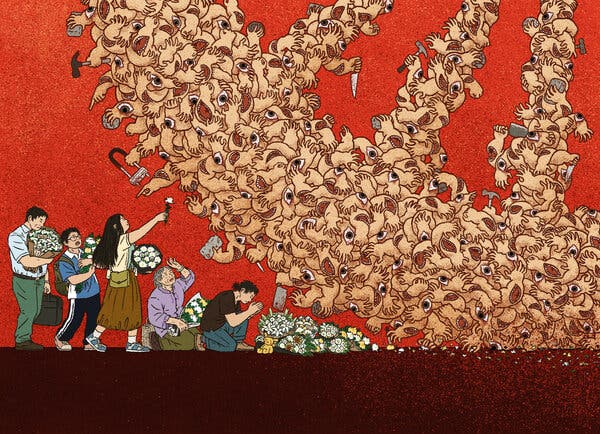the new new world
Angry at what they view as China’s state-led xenophobia, taught in schools and prevalent online, some people are taking action, even at personal risk.

阅读简体中文版閱讀繁體中文版
A Japanese boy was stabbed on his way to school in China on Sept. 18. That’s the date, in 1931, when Japan invaded China.
The child, who was 10 years old, was pronounced dead the next morning. The police arrested a 44-year-old man at the scene who they said had confessed to the attack. Japan’s leaders demanded answers. The Chinese government, calling the attack an “isolated incident,” told Japan to calm down and stop “politicizing” the killing.
Some Chinese people believe the boy was a victim of surging anti-Japanese sentiment fueled by China’s government with a virulent nationalism that is taught in schools and reflected online and in state media.
The evening the boy died, more than 50 Chinese attended a candlelight vigil in Tokyo and issued a statement: “The longstanding extreme nationalism and anti-Japanese education in China have misled some people’s perception of Japan, enabling ignorance and wrongdoing. We are committed to changing this troubling situation.”
Then, a week after his death, young activists, mostly in China but also some outside the country, started a memorial campaign. According to Chinese folklore, the souls of the deceased come back to visit their families after seven days before leaving for heaven.
“As Chinese citizens, we do not wish to grow up in a land of hatred,” the activists said in a statement co-signed by more than 200 people.



